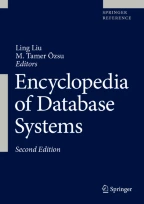
The extended entity-relationship (EER) model is a language for defining the structure (and functionality) of database or information systems. Its structure is developed inductively. Basic attributes are assigned to general base data types. Complex attributes can be constructed by applying constructors such as tuple, list, or set constructors to attributes that have already been constructed. Entity types conceptualize structuring of things of reality through attributes. Cluster types generalize types or combine types into singleton types. Relationship types associate types that have already been constructed into an association type. The types may be restricted by integrity constraints and by specification of identification of objects defined for a type. Typical integrity constraints of the extended entity-relationship model are participation, look-across, and general.